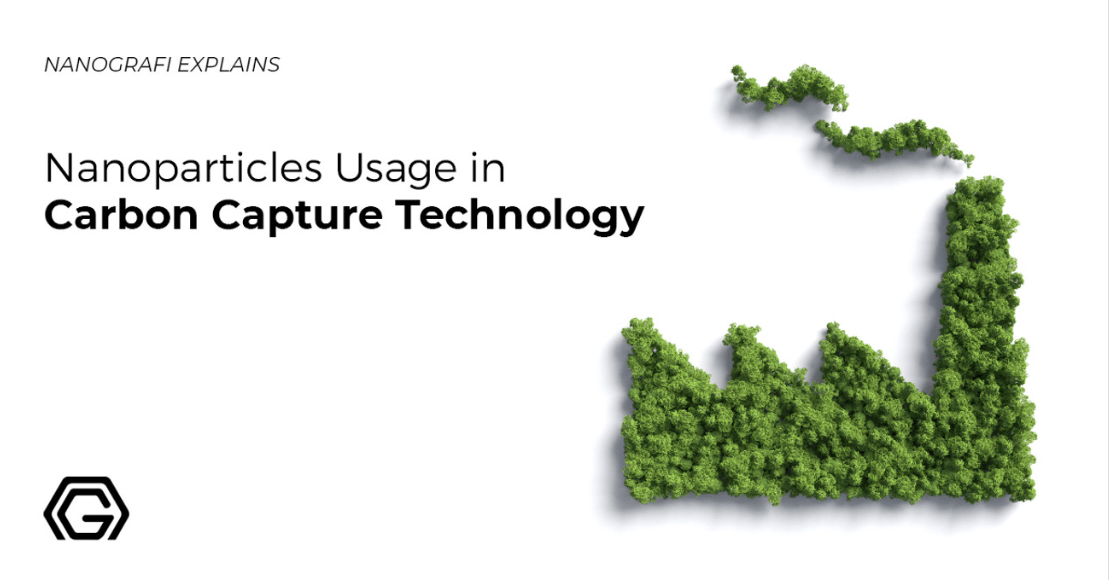Titanium Carbide Nanoparticles
Titanium carbide represents a transitional metal carbide with a melting point of about 3100°C, a hardness as much as 28 to 35 GPa (based on Vickers test) and the electrical conductivity as 450 GPa has a high chemical conductivity and high thermal shock resistance.
Titanium carbide is originally an extremely hard refractory ceramic material looking like a black powder. Ti is also a wear and corrosion resistant inert and hard material. Titanium carbide occurs as a very rare mineral naturally. Visit the Nanografi website to access titanium carbide products, which are rare and important in many applications.
Introduction
Technologically and industrially, titanium carbide is regarded as an important material used in abrasives composites for tape heads in electronics, polishing pastes armor and cutting tools. Based on the latest achievements in nanotechnology, the nanoscale titanium carbide nanoparticles have been synthesized in order to enhance the industrial quality of titanium carbide and even add new properties 1.
Properties of Titanium Carbide Nanoparticles
There is fact that the majority of the Earth’s energy is supplied by carbon as significant component of fossil fuels like natural gas and petroleum, coal and so forth. Energy researchers of modern age have been challenged to find ways to capture atmospheric carbon efficiently. For this purpose, carbides of the transitional metals like titanium carbide have been drawing a lot of attention recently, due to its potential quality in carbon capturing, chemical robustness and favorable catalytic behavior. Particularly, titanium carbide had shown to possess considerable carbon dioxide capturing behavior, activation, storage and more interestingly, carbon dioxide conversion to chemically important compounds. Studies based on Density Functional Theory (DFT) have demonstrated that titanium carbides surface can activate carbon dioxide with high adsorption strength and that it has a stable surface for this application. Titanium carbide is basically a ceramic material that possesses interesting properties like low coefficient of thermal expansion, high elastic modulus and favorable strength 2.
Preparation and Synthesis of Titanium Carbide Nanoparticles
There have been a lot of efforts to produce powered refractory metal ceramics like carbides taking the advantage of carbothermal reduction process at lower temperatures though using polymeric compounds and metal oxides as the sources for carbon. In the case of low-temperature synthesis of carbides like titanium carbide the use of polymeric materials as the source of carbon leads to a synthesis which is mainly energy efficient. The carbothermal synthesis method remains high energy with low yields and a time consuming process in nature which is because of impurities like oxides, subcarbides and free carbons as residues. Up to this point, the production of transition metal carbides or different morphologies from polymeric precursors hasn’t been very successful, though. Generally, the carbothermally reduced TiO2 and graphite mixture, CVD techniques and thermal plasma synthesis are the most common methods to synthesize titanium carbide nanoparticles. Nevertheless, these methods need high synthetic temperature and have shown to be time consuming 2.
Wire explosion process (WEP) or pulse wire discharge is one of the most recent and cost-effective techniques to obtain titanium carbide nanoparticles. This methods involves a single step physicochemical process to generate plasma/vapor of a precursor wire with resulting nanoparticles. In particular, a thin metal wire which serves to connect two electrodes is exploded through applying a high voltage and current to support enough thermal energy in order to for to the wire to melt, evaporate and ionize in a practically short time. The generated plasma during the explosion expands and cools down to interact with the ambient gas to finally condense into metal nanoparticles. The main advantage titanium carbide nanoparticles production using WEP is the reaction’s adiabatic nature in which the deposited energy in the wire is equivalent to its vaporization energy and the titanium carbide nanoparticles are prepared simply by a proper carburizing medium 2.
To learn about Nanoparticles Usage in Carbon Capture Technology, you can read our blog.
Another in situ synthetic method to obtain titanium nanoparticles has been developed which is based on the use of a precursor composition that can be melted. Titanium hydride (TiH2) and 1,2,4,5-tetrakis(phenylethynyl)benzene (TPEB) are the reagents the trigger the reaction at 600°C to yield TiC and TiN nanoparticles in and argon and nitrogen atmospheres, respectively. After the temperature of the compacted powdered precursor composition rises to as high as 200°C, the TPEB of acetylenic engages in the reaction to form a network-like polymer with TiH2 that is dispersed homogenously in the solution. In the middle of the carbonization process of the organic reagent the interstitial space of the Ti lattice is loaded with carbon atoms to make the stoichiometric reaction of titanium carbide be produced 3.
A method has suggested an industrial plasma method to synthesis titanium carbide nanoparticles. This method requires characterization of a three-jet and once-through reactor and simulated mathematical application of plasma interaction with raw materials, main technological parameters prediction of titanium carbide production based on plasma metallurgy as well as the products psychochemical and economic attestation. To go with the process, the industrial version of the three-jet once-through plasma reactor is used at 150 kW power consumption with previously investigated resource and technological characteristics and heating engineering. The average temperature per weight of the plasma flow along the reaction rangers from 5400/1750 K in the case of a non-lined channel and 5500/1900K with insulated from zirconium oxide 4.
Based on the carbothermal method, TiO2 core-sucrose shell precursor is reduced to yield high specific surface area (147m2/g at 1500°C) titanium nanoparticles. The mesoporous property of the nanoparticles causes the high surface area of the particles. Titanium nanoparticles possess two types of pores including pores sized as 20 nm and those that are smaller the 4 nm. Briefly, TiO2 powder is dispersed in aqueous solution of sucrose and mixed, stirred and then dried at 100°C for a 24 hours with the consecutive carbothermal reduction at temperatures between 1150 to 1600°C for 2 hours in argon gas atmosphere to obtain the titanium carbide nanoparticles 1.
Applications of Titanium Carbide Nanoparticles
Titanium carbide and its nanoscale particles are applied in preparing composite materials for ceramics called cermet (cer for ceramic and met for metal) used in high speed cutting machines. It has also found application as a coating in abrasion-resistance surfaces and metals like watch mechanisms and tool bits. TiC is used as a heating shield and coating tor atmospheric reentry of spacecraft. The use of titanium nanoparticles in 7075 aluminum alloy (AA7075) makes it as strong as steel and one third the weight of it. TiC is employed in various industries such as hard alloy production, protective metal coatings and heat resistant products.
Conclusion
Even though there are few reported methods for titanium carbide nanoparticles synthesis, there are studies in progress to obtain them most efficiently and economically due to their considerable role in strengthening alloys and increasing the resistance of metallic surfaces. Titanium has also been proved to have the carbon capturing quality for energy purposes.
To discover the latest news from nanotechnology, you can visit Blografi.
References
1. Bae, S. T., Shin, H., Jung, H. S. & Hong, K. S. Synthesis of titanium carbide nanoparticles with a high specific surface area from a TiO2 core-sucrose shell precursor. J. Am. Ceram. Soc. 92, 2512–2516 (2009).
2. Ghosh, S., Ranjan, P., Kumaar, A., Sarathi, R. & Ramaprabhu, S. Synthesis of titanium carbide nanoparticles by wire explosion process and its application in carbon dioxide adsorption. J. Alloys Compd. 794, 645–653 (2019).
3. Keller, T. M., Laskoski, M., Saab, A. P., Qadri, S. B. & Kolel-Veetil, M. In situ formation of nanoparticle titanium carbide/nitride shaped ceramics from meltable precursor composition. J. Phys. Chem. C 118, 30153–30161 (2014).
4. Shiryaeva, L. S., Rudneva, S. V., Galevsky, G. V. & Garbuzova, A. K. A study on the production of titanium carbide nano-powder in the nanostate and its properties. IOP Conf. Ser. Mater. Sci. Eng. 150, (2016).
Carbothermic Reduction - an overview | ScienceDirect Topics. (n.d.). Retrieved January 29, 2024, from https://www.sciencedirect.com/topics/engineering/carbothermic-reduction
Nanoparticles Usage in Carbon Capture Technology - Nanografi Nano Technology. (n.d.). Retrieved January 29, 2024, from https://nanografi.com/blog/nanoparticles-usage-in-carbon-capture-technology/
Recent Posts
-
Nanocomposites in Food Packaging
The utilization of nanocomposites in food packaging represents a significant advancement in the fiel …19th Apr 2024 -
What is the Difference Between 7075 and 6061 Aluminum Alloy?
When comparing 7075 aluminum alloy to 6061 aluminum alloy, it's essential to understand their disti …5th Apr 2024 -
Iron-Air Batteries: The Ultimate Guide
Iron-air batteries represent a significant breakthrough in energy storage technology, offering a sus …29th Mar 2024







